Companion plant ideas and tips for cannabis

Companion planting is the process of growing different plant species together for their mutual benefit. For cannabis growers, companions planting is typically done outdoors to attract beneficial predators/pollinators and to repel pests. Indoor cannabis growers, with a perfectly controlled pest-free environment, often tend to grow only cannabis plants without companion plants.
What is companion planting and how does it work?
Companion planting for cannabis growers is an organic, natural way of using different plant species for the overall mutual benefit of your garden. Farmers have used companion planting for thousands of years when growing traditional crops. In recent years, outdoor cannabis growers have found that companion planting is an easy way to increase protection from pests, increase the numbers of beneficial predatory insects and also improving soil health. Improved soil health assists the cannabis root network to grow in optimised conditions.
| Related: |
| All you need to know about cannabis roots |
The key benefits of companion plants for cannabis
.jpg)
With a good array of companion plants around your outdoor cannabis plants you can expect less pests to stress/attack them. This will allow your plants to grow faster and stronger, allowing heavier harvests and superior quality.
Many outdoor cannabis growers can struggle from time to time with worrying levels of pests, aphids and bugs which can reduce future quality/quantity of their harvests. One option for the outdoor grower is to plant a few seeds of companion plants around their cannabis plants. The cost is minimal but the effect can be quite dramatic. In the best cases, outdoor growers can grow cannabis plants in environments which would otherwise be too difficult to grow fine quality cannabis.
The ultimate list of companion plants for cannabis
Many gardeners will already be familiar with the basics of companion planting. Growing onions and carrots next to each other is a classic example. The aroma of the onion terpenes repels carrot fly. The terpenes from the carrot plant deters onion fly. It’s a mutually beneficial arrangement for both plants.
Nitrogen-fixing companion plants are also highly valued. Legumes will convert atmospheric Nitrogen into useful Nitrogen-rich fertilisers in the root zone, improving soil quality and texture.
If you’re an outdoor cannabis grower and haven’t yet tried adding a few simple companion plants to your outdoor grow locations then you could be missing out on a low-cost, natural way to significantly improve your results.
Companion plants to act as a cover crop
The following common plants and herbs are all great to plant alongside your outdoor cannabis seeds. The added biodiversity they bring increases the overall health. If you also grow vegetables in your garden you will benefit from the increased presence of pollinators and predator insects. All these companion plants are easy/cheap to order online as seeds and will grow easily without any extra work for you.
Some companion plants are helpful as a so-called cover crop. These will form a mat-like covering over the ground, helping to seal in moisture and improve the soil texture, health and water content. Whether you’re growing autoflowering cannabis seeds or feminised cannabis seeds your plants will all benefit from companion plants and the beneficial insects/pollinators/predators that they bring.
Alfalfa

Alfalfa is simple to grow and excellent at improving the soil. Alfalfa is also a legume, this means that it works with bacteria in the soil to ‘fix’ atmospheric nitrogen—an essential nutrient that is essential for your cannabis plants.
Alfalfa also improves soil texture. The fine root system fills the earth with moist roots, drawing water into the cannabis root zone and improving drought resilience. Just scatter a few Alfalfa seeds on the ground in Spring and you should see seedlings a week or two later.
● Where: Grow on the earth around the base of cannabis plants
● When: From Spring to summer
Cerastium
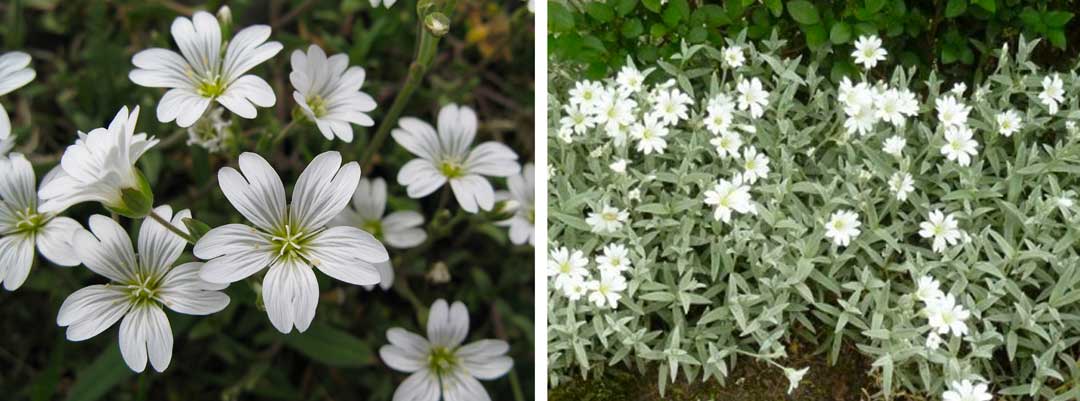
Cerastium produces a carpet-like covering over the ground, helping to retain soil moisture. It’s a classic cover crop which encourages bio-diversity. Many outdoor cannabis growers feel that leaving bare earth around their plants isn't necessarily the healthiest or most natural of situations.
Seeds will germinate early within a couple of weeks of being scattered and take a month or two to reach maturity when they can reach around 20cm tall. The roots can survive harsh winters and grow back the following year. After flowering they are often cut back and used as a mulch.
● Where: As a cover crop, around the base of your plants.
● When: Early spring onwards
Companion plants used as nitrogen fixers for cannabis
Nitrogen ‘fixers’ are plants with the special ability to absorb atmospheric Nitrogen and convert it into a solid form around the root zone. Often this is in the form of Ammonium compounds which are then easily absorbed by the cannabis root system. Nitrogen fixing companion plants are used widely by organic gardeners of all types. They are easy to grow and perfect options to grow in and around your outdoor/greenhouse cannabis patch.
Red clover

Red Clover produces the familiar pink ‘pom pom’ flowers that attract pollinating insects. The seeds can be sown from early spring onwards, loamy soils are ideal and Red Clover thrives at the slightly acidic soil pH’s loved by cannabis. Seeds should be placed around 1cm (1/2 inch) below the soil surface, around 5-6cm apart.
This bushy plant fixes Nitrogen around it’s root zone, if you have ever noticed your outdoor cannabis plants are not quite as green as you would like, then some nitrogen fixing companion plants could be a great idea.
● Where: Around the base of your cannabis plants, Red Clover helps fix Nitrogen and acts as a useful ground cover/mulch
● When: Early Spring
Companion plants used to deter cannabis pests
Companion plants often deter cannabis pests thanks to an aromatic smell that repels them. These aromas can be created by natural terpenes that are present in many different plants (not just cannabis!). Some of these scents, whilst harmless to humans and the cannabis plant, are tremendously effective at discouraging certain types of bugs and insects from setting up home nearby.
Lavender

A rich and familiar aroma, humans have put a sprig of lavender in their wardrobes to help repel moths and keep their clothes smelling fresh. Bees are one of the few insects that are drawn to lavender, many others pests and critters are put off by the pungent terpene known as linalool which gives the distinctive lavender aroma. Many outdoor cannabis growers like to have a lavender plant, or two, growing near their plants.
● Where: A plant or two around/near your cannabis grow location
● When: Scatter lavender seeds in Spring
| Related: |
| What is Linalool and what are the effects of this terpene? |
Peppermint

Mint has a fresh, zesty aroma created by a complex blend of terpenes including menthol, menthone, menthofuran, isomenthone, (E)-caryophyllene, 1,8-cineole, linalool, limonene, carvone, pulegone and α-terpineol.
Pungent smelling peppermint oil has been traditionally very popular to repel both insects and mice. Often cotton balls with a drop of peppermint oil were used around houses, windows etc to keep pests away. Peppermint remains a popular cannabis companion plant with guerrilla growers, many have a plant or two growing near their cannabis plants. Seeds take a couple of weeks to germinate and are very easy to grow. So easy, that you may have to occasionally remove some if it spreads too far and takes space away from other companion plants.
● Where: Close to your cannabis plants, note it can grow and spread quickly.
● When: Spring
Companion plants to attract beneficial insects for cannabis
Insects often evolve to favour their preferred plants. If these insects are beneficial ones, for example they devour aphids, then these plants are a great addition to any outdoor grow location. By deliberately planting these companion plants your cannabis patch should always be hosting a healthy population of beneficial predator insects.
Yarrow
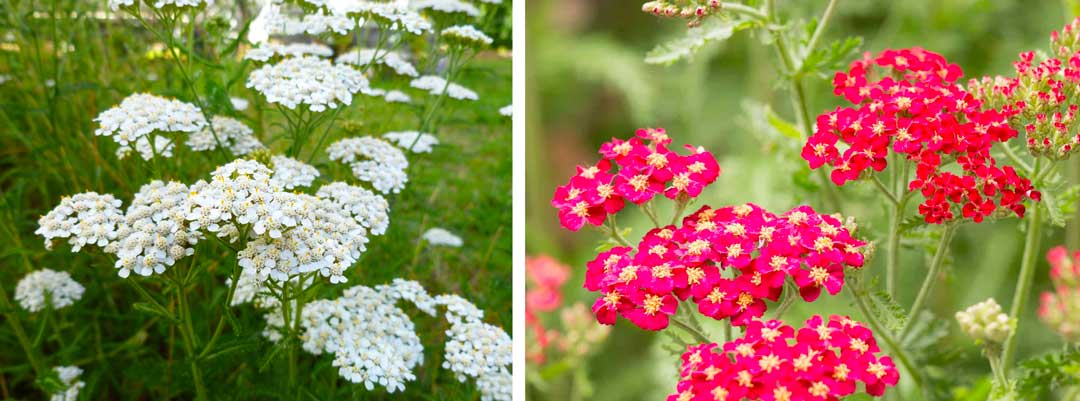
Yarrow attracts numerous predator insects. Ladybugs (AKA Ladybirds) and Aphid Lions are two of them. So if you suffer from greenfly, whitefly etc during the summer months then Yarrow could be a useful companion plant. Traditional gardeners claim that the presence of Yarrow can boost oil production in neighbouring plants, though there isn't a clear mechanism for how this would happen. If true, it could enhance flavour and taste in a cannabis crop.
● Where: Close to your cannabis plants where the beneficial insects will have maximum effect
● When: Late Spring, early summer
Sunflower
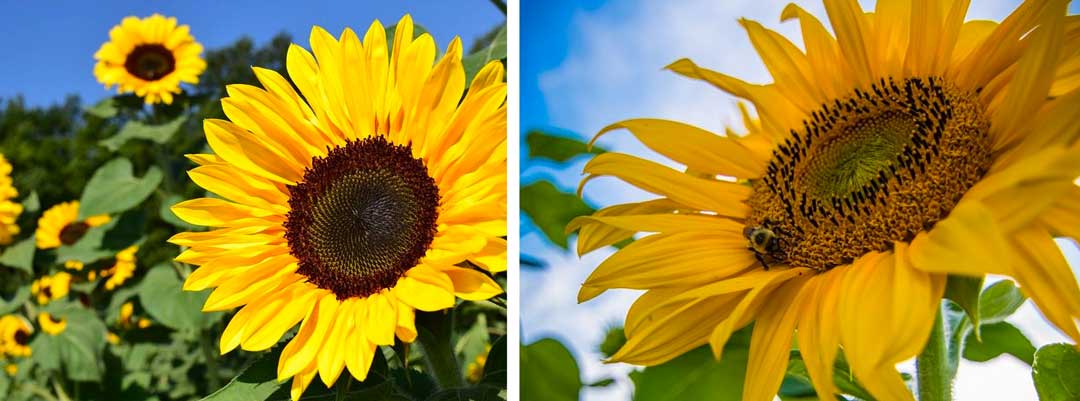
This tall-growing plant attracts bees and other pollinating insects which help maintain a bio-diverse and healthy setting for your cannabis plants. Sunflower plants can also attract birds keen to feast on the large seeds. These birds also feast on insects, helping to ensure some predators are around if insect populations get too high.
● Where: Around the edges of your cannabis grow location. A few sunflowers can also help act as a mini-wind break and create a tall visual barrier to block views of your cannabis plants
● When: Early Spring, March/April
Companion plants for your own stash of edible herbs
Some plants are useful to add to salads as well as performing a useful function as companion plants.
Basil

The sweet pungent scent of Basil fills the surrounding air and tends to deter aphids and some beetles. Like many of the other companion crops mentioned, Basil is edible for humans and can be added to salads etc.
● Where: As a ground crop in-between your cannabis plants
● When: From spring onwards
Borage

Rich in nectar and adored by pollinators, Borage is a colourful and useful companion plant to grace any grow location. Effective at attracting beneficial insects.
● Where: Between your cannabis plants
● When: Early spring to late spring
Chamomile

An aromatic companion plants favoured highly by gardeners of all types who find it attracts beneficial insects and predator insects.
● Where: Between your plants or around the border
● When: Spring-summer
Chervil

Chervil is said to attract aphids, for that reason many growers will plant some at a distance from their cannabis plants. The idea is that the aphids will preferentially hang out near the Chervil rather than your cannabis.
● Where: Around borders, not too close to your cannabis plants
● When: Spring/summer onwards
Coriander
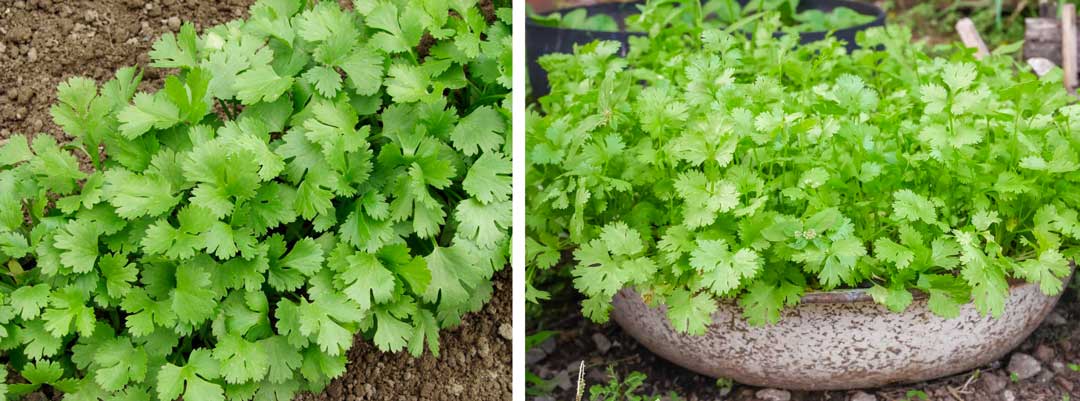
Another useful multi-purpose herb, Coriander produces a distinctive aroma said to attract beneficial insects such as parasitic wasps and repelling less desirable guests such as spider mites, aphids and certain beetles.
● Where: Can be grown in generously sized beds around/near your plants
● When: Spring onwards
Dill
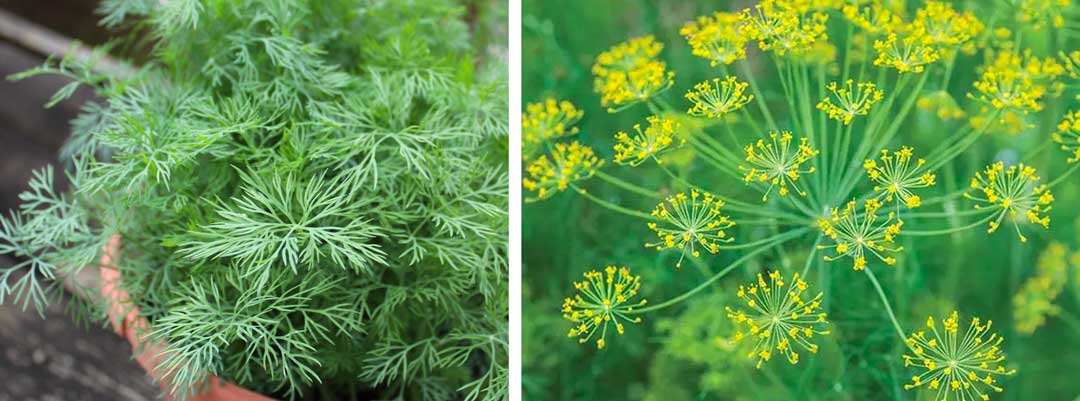
Harvest and use the dill after your cannabis plants are safely harvested! The aniseed-like taste and aroma is unpleasant to spider mites and some caterpillars.
● Where: Scattered around/near your cannabis grow location
● When: Early spring - summer
Lemon balm
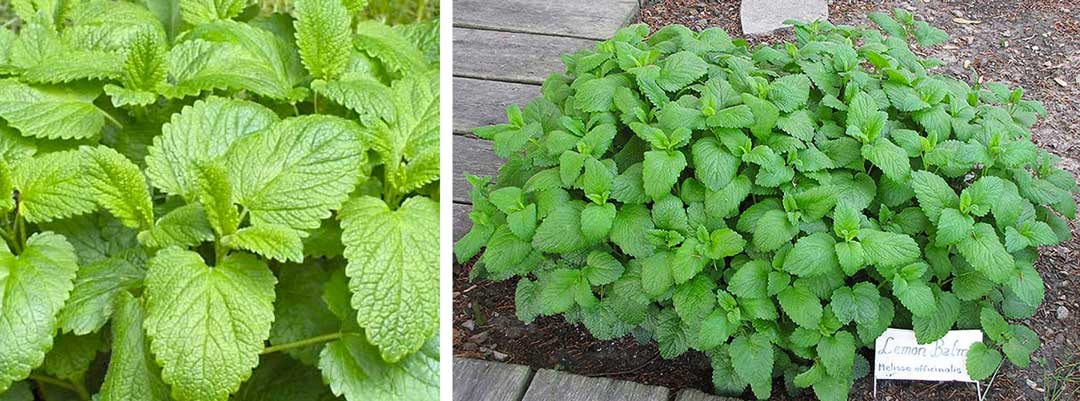
A member of the aromatic mint family, Lemon Balm is often used by gardeners of all types to attract beneficial insects. The scent is thought to be unpleasant to some pests such as aphids. Ensure this vigorous growing plant doesn't take over your grow location, it will occasionally need removing if the growth becomes too much and she starts to take over the cannabis plantation!
● Where: Near your cannabis plants, perhaps not too close due to the rapid spread
● When: Spring onwards
Marigold
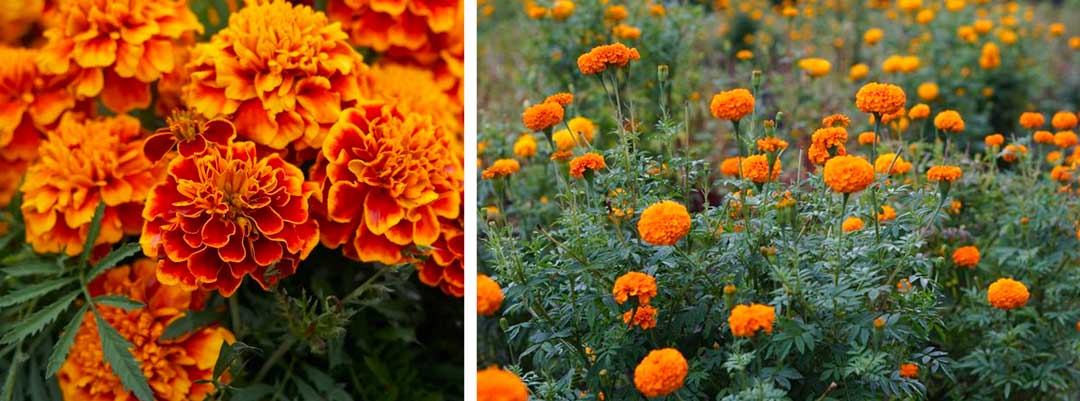
The bright colours of Marigolds are thought to confuse aphids causing them to go elsewhere. Marigolds are also said to be highly effective at repelling white cabbage fly and cabbage moths, both of which are pests for cannabis plants. As well as looking pretty, Marigolds are a useful consideration as companion plants for anyone growing a few cannabis seeds outdoors this summer.
● Where: Around and among your cannabis plants
● When: Early Spring onwards
Parsley
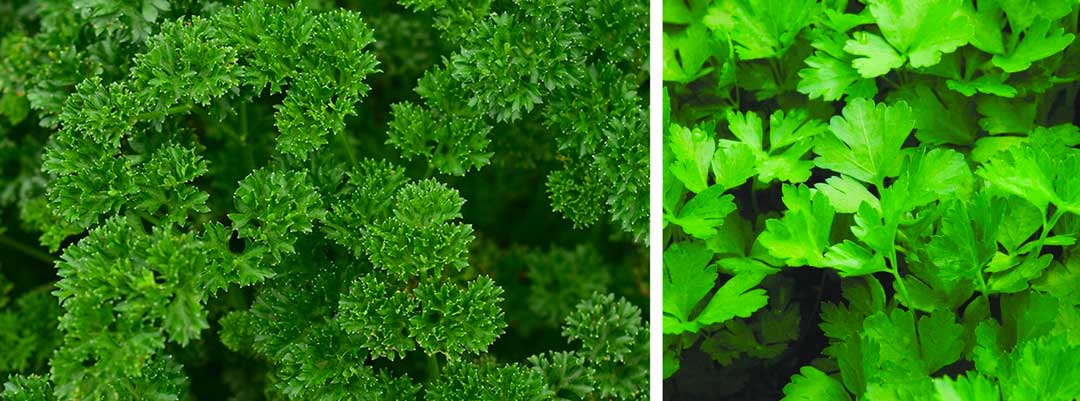
Parsley’s flowers have a scent which attracts pollinators such as the black swallowtail butterfly. Parsley also attracts the braconid wasp—which thrives on common pests like army worms, cabbage worms, codling moths, gypsy moths and the tachinid fly.
● Where: Around the borders of your cannabis plants
● When: From spring onwards
White clover
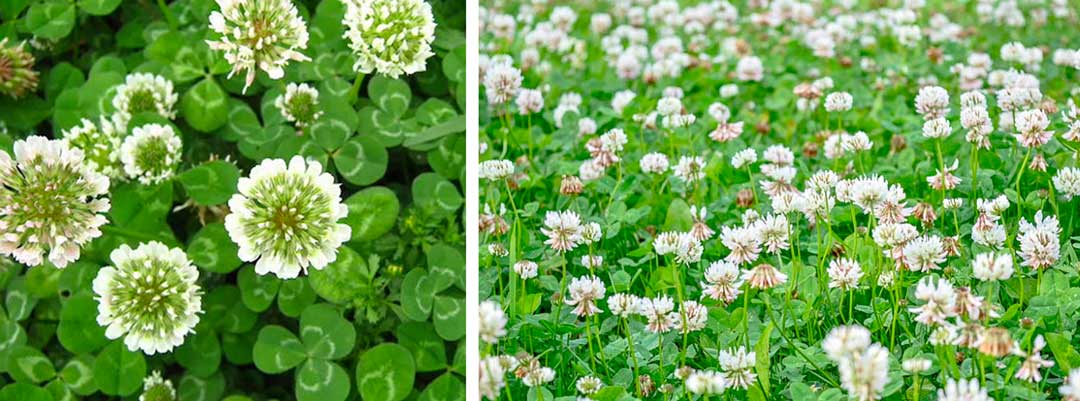
White Clover produces a pest-resistant living layer above the soil which traps moisture and boosts soil nitrogen levels. It is a perennial plant which tends to spread easily across the soil surface. Familiar white mini puff-balls are formed when she flowers.
● Where: As a mulch around your plants
● When: Spring/summer onwards
The key takeaways of cannabis companion planting
Those growing their cannabis seeds indoors can create an environment free from any pests. However when growing outdoors pests are simply impossible to avoid. That’s why so many outdoor cannabis growers have applied companion planting to boost the health of their plants and the subsequent harvest quality. Companion planting is a technique that has been used successfully for thousands of years in general agriculture and it also works well for cannabis cultivators too!
How to plant companion plants for cannabis
If you haven’t considered companion planting for cannabis before then it really is worthy of serious consideration. Far from being a pseudo-science, the principles of cannabis companion plants are well established and produce measurable improvements. Any cannabis grower that has seen their precious plants destroyed by aphids, bugs, caterpillars etc will know the value of a few companion plants nearby to ensure that pests don't have an easy ride.
How far do you plant companion plants from cannabis

A cover-crop is just that, a layer of living mulch that can safely grow around the base of your cannabis plants trapping moisture and preventing pests dominating. Other plants that attract beneficial insects can be planted on the ground between your cannabis plants, as can those that deter pests.
Nitrogen-Fixing companion plants for cannabis enhance the soil quality and nutritional value. These can also be planted between your cannabis plants. Remember that many of these companion plants are perennial and will come back year after year. The experienced grower will ensure that none of the companion plants start to take over the grow location.
Occasionally cutting back the companion plants will be necessary. Remember, your cannabis seeds and the plants they produce are your main focus. Your companion plants are there simply to balance the environmental odds in favour of your cannabis plants rather than the pests which would like to feast on them.
Which companion plants shouldn’t be grown together
Not all companion plants grow well when planted in the immediate vicinity of each other. So to get best results you may wish to plant the following companion plants a couple of metres away from each other.
| Beneficial companion plant | Unsuitable with… |
| Cerastium | Angelica, Fennel |
| Yarrow | Allium family (onion, garlic, chives…), Rue |
| Lavender | Thyme, Rue |
| Peppermint | Lavender, Dill, Coriander |
| Dill | Cilantro or Coriander |
| Sunflower | Pole beans |
| Sweet basil | Thyme, Rue |
| Coriander | Dill |
What should not be planted with cannabis at all?
Occasionally you can get unlucky and find some plants/weeds can literally become infested with one type of pest e.g. caterpillars/aphids and act as a host for that colony. If you see any plants like this simply uproot them and take then far away from your cannabis plants. These problems can happen to the best outdoor growers, even when thought has been given to companion planting. Insect/pest infestations can be hard to completely avoid.
Remember that the only real way to grow a cannabis mono-culture is indoors in a controlled environment. Outdoors there are always going to be pests and challenges. The astute outdoor cannabis grower can tip the odds in their favour by growing their cannabis seeds alongside seeds of some beneficial companion plants. Companion plant seeds really are cheap and easy to grow, they are highly recommended for any outdoor cannabis grower and can be applied throughout the growing season from Spring onwards.





























Ian Moone
2024-10-03 02:39:26
This is a great blog, but I'm still confused on what plants will be best to use lol. I've seen on another website that basil or sweet basil should be kept away from cannabis plants.
Lola - Dutch Passion
2023-11-30 10:38:45
Hello SteveStylz 2023-11-02 01:16:57. Absolutely :) This blog might be an interesting read for you: https://dutch-passion.com/en/blog/how-to-detect-and-cure-mould-on-cannabis-n1155 Greetings, Lola - Dutch Passion
SteveStylz
2023-11-02 01:16:57
Thank you... Never stop learning Never stop Growing. I'm getting my Lady friends some companions next year to grow with. I grow here in Aloha, Oregon and Mold is a thief I can not shot ...any tips on controlling MOLD.
Lola - Dutch Passion
2023-01-26 12:02:59
Hello @Carmen 2022-12-10 13:29:57, If you are referring to cucurbits as a family best to avoid it. Greetings, Lola - Dutch Passion Hola @Carmen 2022-12-10 13:29:57, Si se refiere a las cucurbitáceas como la familia, es mejor evitarlas. Saludos, Lola - Dutch Passion
Carmen
2022-12-10 13:29:57
Puedo asociar cucurbitaceas como mantillo con el cannabis?